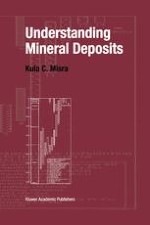2000 | OriginalPaper | Chapter
Uranium Deposits
Author : Kula C. Misra
Published in: Understanding Mineral Deposits
Publisher: Springer Netherlands
Included in: Professional Book Archive
Activate our intelligent search to find suitable subject content or patents.
Select sections of text to find matching patents with Artificial Intelligence. powered by
Select sections of text to find additional relevant content using AI-assisted search. powered by
The earliest mining of uranium ore, in 1727, was for recovery of radium from pitchblende (a poorly crystalline variety of uraninite) in a vein deposit at Joachinstal, Bohemia (Joachimsthal, former Czechoslovakia). The first important sources of radium outside Czechoslovakia were the sandstone-hosted uranium-vanadium deposits of Colorado and Utah (USA) from which about 275,000 tons of ore were produced during 1898–1923. This ore yielded about 200 g of radium, 2,000 tons of vanadium, and a small but undetermined amount of uranium most of which went into the mine tailings. The increased demand for uranium since the early 1960’s is almost entirely due to the development of nuclear reactors using uranium as the raw material. The Western world uranium production ranged between 55 to 61 million pounds of U3O8 during 1992–1995 (The Mining Record, March 1, 1995). Several intertwined factors — reactor safety, disposal of nuclear wastes, capital costs, political considerations — are responsible for the current stagnation and future uncertainty of the nuclear power industry and, along with it, of the uranium mining industry. Nevertheless, the uranium deposits offer a fascinating story because of their spatial, temporal, and genetic diversity.
